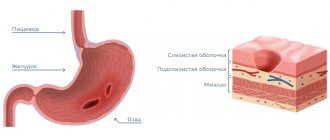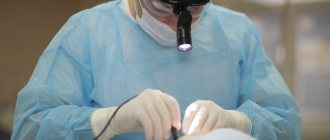Symptoms and signs
Candidiasis in men and women manifests itself in three forms:
- acute candidiasis. Characterized by a bright current;
- chronic. In this case, relapses are replaced by remissions;
- carrier status When diagnosing candidiasis, a fungus is detected, but the person has no symptoms. In this case, treatment of candidiasis is not required.
Symptoms and treatment of candidiasis depend entirely on the form of the disease. There are several varieties depending on location.
Candidiasis of the reproductive and urinary system is one of the most common types. It is also called urogenetic. Most often in women, vaginal candidiasis (vaginal candidiasis) occurs. The main characteristic feature is a cheesy whitish discharge with a sour odor. Vaginal candidiasis (vaginal candidiasis) during pregnancy is also possible, and is a fairly common and unpleasant phenomenon. By the way, the child is often born with thrush after this. In men, this form can also appear. In this case, the symptoms of candidiasis are film-like plaque on the genitals. Also characteristic are redness of the mucous membranes and skin, discomfort, itching, and burning when urinating.
Oral candidiasis (oral candidiasis, oral candidiasis) is another common type of disease. Most often it is diagnosed in young children, although cases in adults are not excluded. Oral candidiasis usually occurs in an acute form. It causes a lot of discomfort and trouble to the patient. Symptoms of oral candidiasis:
- whitish plaques and dots;
- redness of the mucous membrane;
- small sores that bleed;
- whitish coating;
- swelling of the tongue, tonsils.
If you do not take medications and remedies for candidiasis in a timely manner, then the infection will subsequently spread to the organs of the digestive tract, vocal cords, and nasal passages.
Candidiasis of the upper gastrointestinal tract develops due to the presence and spread of infection from the oral cavity. A striking example is candidiasis of the esophagus and stomach. In this case, vomiting, heartburn appear, appetite worsens, discomfort and pain in the chest are felt, and problems with swallowing appear. Symptoms and treatment of intestinal candidiasis are interrelated. Typically, this form occurs due to improper and uncontrolled use of antibiotics, especially if the immune system is weakened. This form is also common. In this case, as with esophageal candidiasis, appetite worsens and vomiting is possible. The release of gases also increases, food digestion worsens, and pain is felt. The patient may lose weight dramatically. He suffers from diarrhea, chills, and fever. Itching in the anus is also possible.
The pulmonary form of candidiasis is secondary. It occurs due to inflammatory processes in the respiratory organs, purulent infections, and tuberculosis. Candida fungus enters the mucous membranes of the bronchi. Diagnosing this condition is extremely difficult. The main signs of pulmonary candidiasis:
- weakness;
- general malaise;
- cough with sputum production, and there are purulent impurities in it;
- pain in the lungs;
- increase in body temperature;
- voice change.
Signs of ear candidiasis:
- the presence of gray or whitish discharge;
- severe itching inside the ear;
- the presence of weeping wounds.
What does eye candidiasis look like:
- increased lacrimation;
- itching;
- redness of the mucous membrane of the eyes;
- plaque on the eyelids;
- blurred vision;
- purulent discharge from the eyes;
- sensation as if there is a foreign object in the eye.
Candidiasis can appear on the palms of the hands, under the arms, under the breasts, between the fingers, and on berries. The infection quickly spreads to neighboring areas, creating large lesions that are characterized by a dark red hue. Cutaneous candidiasis is characterized by the appearance of white crumbs from keratinized skin particles, cracks, and blisters. The affected areas are very itchy.
Candidiasis also develops on the nails, especially on the toes. This is a very common form. At the same time, the nail turns yellow and begins to peel. Lumps appear on the nail plate. The cushion nearby swells, becomes red, and ulcers may appear.
Are you experiencing symptoms of candidiasis?
Only a doctor can accurately diagnose the disease. Don't delay your consultation - call
Vaginal candidiasis: 7 pressing issues - MEDSI
Table of contents
- What causes candidiasis?
- How does candidiasis develop?
- How does thrush manifest?
- How does vaginal candidiasis occur?
- Why is candidiasis dangerous for pregnant women?
- How is the diagnosis made?
- How to treat candidiasis?
- Advantages of carrying out the procedure at MEDSI
Candidiasis (“thrush”) is a fungal infection of the mucous epithelium (from the Latin name of yeast-like fungi: Candida - “white”).
The causative fungus has several varieties; in our latitudes, Candida albicans predominates, which belongs to the opportunistic microflora - with normal immune function, its carriage is not a disease and does not cause discomfort. Symptoms appear when the immune status is impaired or under the influence of external factors - the fungus affects the mucous membranes (oral cavity, intestines, etc.).
In women, vaginal candidiasis is most common.
What causes candidiasis?
- HIV, immunodeficiencies
- Pregnancy
- Powerful stress
- Long-term use of estrogen
- Glucocorticoids
- Injury to the mucous membrane: conization of the cervix, abortion, childbirth, erosion
- Antibacterial therapy: by destroying pathogenic bacteria, antibiotics also remove normal flora microbes - the natural protection of mucous membranes from the introduction of fungi
- Taking cytostatics (chemo drugs that suppress tumor growth)
- Immunosuppressants (suppress the immune system)
- Radiotherapy (irradiation)
- Penetration of atypical fungi from outside – Candida tropicalis or others.
How does candidiasis develop?
Natural protection is provided not only by humoral factors (blood proteins), but also by its own normal flora: the predominance of lactobacilli in the vagina suppresses the growth of fungi. Disruption of the microflora due to injury, medication, as well as the penetration of fungi from the outside, with poor hygiene, allows candida to multiply intensively.
When fungi settle on the walls of the genital tract, they injure the epithelium and adhere tightly to the mucous membrane. Their waste products acidify the vaginal environment and irritate the sensory nerves. When these products enter the bloodstream, an immune reaction is triggered, manifested by inflammation. When the immune response is excessive, allergic reactions occur, which worsen the symptoms of the disease.
The result of infection of the genital tract by Candida fungi is a white discharge resembling curd flakes, consisting of desquamated epithelium, mucus and a mass of fungi, as well as a complex of easily recognizable symptoms.
How does thrush manifest?
The most indicative for diagnosing the disease are cheesy discharge, which can differ in volume, density, consistency, have a yellowish tint and even take the form of quite large lumps.
Almost always, the discharge is accompanied by itching, often unbearable, burning, a feeling of heaviness, distension in the vagina, swelling and redness of the visible mucous membranes. Painful urination and pain during sexual intercourse may occur.
Symptoms may intensify after thermal procedures, in hot weather, or with prolonged sitting.
With the chronic course of a fungal infection, frequent relapses, the clinical picture may be blurred, some symptoms are absent - a fungal infection is detected by chance during a smear analysis.
How does vaginal candidiasis occur?
There are 4 forms of the disease:
- Acute candidiasis - characterized by copious discharge, itching, pain, burning of the genitals. Vivid clinical manifestations persist for up to a week, then gradually subside. There are no symptoms of general intoxication, the temperature is normal
- Chronic candidiasis - the disease returns in the presence of predisposing factors, but is not so violent, often asymptomatic. It may be complicated by the addition of a secondary infection, since the mucous membrane is constantly injured by the fungus. It occurs more severely in diabetes mellitus and leukemia
- Recurrent candidiasis - alternating exacerbations (more than 4 per year) and remissions
- Carriage – fungi constantly live on the mucous membrane of the genital tract, but do not reproduce, as they are suppressed by normal flora and immune defense factors
Why is candidiasis dangerous for pregnant women?
In pregnant women, vaginal candidiasis requires treatment, despite the fact that it does not directly affect the pregnancy and the course of labor:
- The damaging effect of the fungus on the mucous membrane and severe inflammation can provoke the development of a secondary infection in conditions of reduced immunity with minor errors in hygiene, which can lead to intrauterine infection of the fetus
- When a child passes through the birth canal, contamination may occur, which will manifest itself in the newborn as stomatitis, otitis, sinusitis or gastrointestinal lesions
Treatment of vaginal candidiasis in pregnant women involves a careful choice of therapy, a balanced balance of benefits and harms.
How is the diagnosis made?
A gynecologist diagnoses and treats candidiasis. He conducts a visual examination on the chair and takes biological material (urogenital smear).
Material research can be carried out using two methods:
- Smear microscopy is the examination of smears on glass slides under a microscope. Allows you to determine the amount of fungus, assess the level of inflammation by the number of leukocytes
- Bakposev (microflora analysis) - placing the material on a nutrient medium and growing it in order to identify the pathogen. Also allows you to determine the sensitivity of the fungus to drugs
How to treat candidiasis?
Treatment for vaginal candidiasis includes:
- Taking antifungal drugs
- Antibiotics
- Antimicrobials
- Glucocorticosteroids (in complex therapy)
- Combined drugs (antifungal antibiotics of three different groups, antibiotics + antimicrobial + antifungal agent + glucocorticosteroid)
- Douching or bathing with soda solution
Most modern medications are produced not only in tablet form, but also in the form of vaginal tablets, capsules, suppositories, and creams. They are used locally and do not have a systemic effect, so they can be prescribed to pregnant and lactating women.
Advantages of carrying out the procedure at MEDSI
- Practicing obstetricians and gynecologists at MEDSI follow current global trends in treatment
- Possibility of express diagnostics
- Individual approach to each patient, selection of a treatment regimen taking into account the characteristics of the body
- Monitoring over time, correction of the treatment regimen, discount on re-appointment
To make an appointment, call 8 (495) 7-800-500 (open 24 hours a day).
Routes of infection
The amount of candida fungus can also increase upon contact with a previously infected person. For example, the causes of candidiasis in this case are as follows:
- during sexual contact (usually in this case the urogenital, vaginal or oral form develops);
- during pregnancy (in this case, the infection is transmitted from mother to child, and he/she develops symptoms of candidiasis at birth);
- during dental procedures (for example, prosthetics - in this case, an adult develops candidiasis in the mouth);
- injuries to the eyes, ears, skin (infection gets into the wounds).
Candidiasis and pregnancy
About 90% of pregnant women suffer from the disease. Such a high prevalence of thrush during pregnancy is due to the fact that in the female body during this period processes occur that give impetus to the active reproduction of the Candida fungus: hormonal levels change, the body’s defense mechanisms decrease, and a lack of vitamins and minerals occurs.
Despite the fact that the disease is diagnosed in the vast majority of pregnant women, a frivolous attitude towards it is unacceptable.
- There is a risk of transmission of Candida fungus to the fetus. This can happen not only during the baby’s passage through the birth canal, but also in utero.
- Infection with the fungus creates conditions for the development of intrauterine oxygen deficiency in the fetus.
- The risk of premature birth, as well as the birth of a baby with low body weight, increases.
- There is a threat of polyhydramnios formation and premature rupture of amniotic fluid.
During pregnancy, the symptoms of candidiasis do not always appear clearly. It is important to carefully monitor the condition of the body, at the slightest suspicion of infection, consult a doctor and not self-medicate.
to contents ^
Risk factors
Factors contributing to infection:
- uncontrolled use of antibiotics (in this case, treatment of intestinal candidiasis is especially often required), weakened immune system;
- failure to comply with personal hygiene rules;
- inflammatory and infectious processes (especially caused by bacterial infection);
- allergic reaction, wearing contact lenses (increases the risk of ocular candidiasis);
- severe stress, psychological and physical fatigue;
- sudden climate change;
- poor nutrition, diabetes and various diseases of the endocrine system;
- leaving the limbs in water for a long time (this can cause fungus on the nails).
These factors can become a trigger for the development of thrush. And before you think about how to cure candidiasis, you first need to eliminate the influence of such negative factors.
Complications
Medicines for candidiasis must be taken as early as possible, otherwise the disease may become advanced and become chronic. It is dangerous due to numerous complications.
For example, due to urogenital and vaginal candidiasis, diseases of the kidneys, urinary tract, and reproductive organs develop. There may even be infertility, cervical erosion in women, urethritis and prostatitis in men. If such a disease appears during pregnancy, a miscarriage is possible.
With ear candidiasis, sepsis may develop and hearing may deteriorate. With ocular vision, vision drops sharply. With candidiasis of the digestive organs, there is a possibility of developing anemia and peritonitis.
What is systemic candidiasis
Systemic or visceral candidiasis is a severe form of thrush, caused by yeast fungi of the genus Candida albicans. The infection affects internal organs and systems, causes their inflammation, and leads to severe, sometimes irreversible complications.
The main cause of the pathology is congenital or acquired immunodeficiency. In both the first and second cases, the balance of microflora in the patient’s body is disturbed, in which beneficial microorganisms that control the activity and vital activity of pathogenic fungi and bacteria die, and their place is taken by a pathogenic infection. Gradually, the number of candida increases in number, they penetrate into the circulatory and lymphatic systems, from where, together with blood and lymph, they are spread throughout the body, settling and continuing to actively multiply in the tissues of target organs.
Persons who have been diagnosed with the following pathologies are at risk of contracting systemic candidiasis:
- diabetes;
- pulmonary tuberculosis;
- oncological tumors;
- HIV infection;
- extensive burn injuries;
- cirrhosis of the liver.
Also, fungal disease often develops in people who uncontrollably take antibiotics, cytostatics, immunosuppressants, and hormonal drugs. Premature newborns and children with critically low body weight are at risk. Artificial ventilation, chemotherapy, surgery on the abdominal organs, the need for constant use of intravascular and urinary catheters are manipulations that can also lead to serious complications, including systemic candidiasis.
Considering the location of the fungal infection, the following types of visceral thrush are distinguished:
- Anorectal. Manifested by the formation of ulcers and erosions in the anus.
- Bronchopulmonary. Accompanied by respiratory failure, often leading to the progression of complicated candidal pneumonia.
- Gastrointestinal. The infection affects the mucous membranes of the esophagus, stomach, and various parts of the intestines.
- Lower respiratory tract. Accompanied by symptoms similar to those of bronchitis.
- Urinary. Causes damage to the kidneys and bladder.
When to see a doctor
It is necessary to contact a specialist as soon as the first suspicion of candidiasis appears. This applies to symptoms such as mild malaise, discomfort, itching, peeling of the skin, splitting of the nails, redness of the skin and mucous membranes in the mouth, groin, cheesy discharge on the genitals, burning sensation when urinating, vomiting, chest and abdominal pain, diarrhea and etc.
In case of candidiasis, which doctor diagnoses and draws up a treatment regimen for candidiasis depends on the location of the pathological processes. This could be a dermatologist, urologist, gynecologist.
Myths and dangerous misconceptions in the treatment of candidiasis
Myth 1. Thrush is normal, everything will go away on its own. In fact, if the disease is not treated, it will become chronic and cause other health problems.
Myth 2. Thrush occurs only in sweet tooth lovers. Wrong, in fact it all depends on the immune system. Sweets are allowed, but in moderation.
Myth 3. Fermented milk products are the best prevention of thrush. Some girls even soak cotton pads in kefir and wipe problem areas. In fact, it is not worth wasting time on such folk remedies.
Myth 4. The disease can be treated with just 1 tablet. In fact, a comprehensive approach is required.
How the disease is transmitted
Yeast fungi of the genus Candida albicans belong to the opportunistic microflora that lives on the skin and mucous membranes of almost every person who does not have health problems. The activity of the infection is suppressed by the body's protective immune system.
The first acquaintance with Candida fungi occurs during the first year of a child’s life - through contact with an adult, using various household items, eating a certain type of food on the surface of which there are fungi.
A common cause of fungal infection in adults is promiscuity and unprotected sex. Persons who visit swimming pools, baths, saunas and do not observe the rules of personal hygiene are at greatest risk of becoming infected with a pathogenic microorganism.
Prevention
In order not to think later about how to treat candidiasis, it is recommended to regularly prevent candidiasis. To do this, you need to switch to a healthy lifestyle, strengthen your resistance to any stress, infectious diseases, and avoid hypothermia. Hardening, consuming vitamin and mineral complexes, and a proper and balanced diet will also benefit. It is also important to promptly treat any diseases. Diet for candidiasis is also important: avoiding sweets, bread and confectionery, fatty foods, and fried foods. It is better to eat boiled and steamed food, as well as more fresh fruits and vegetables.
Diagnosis and treatment of systemic thrush
Very often, systemic candidiasis is diagnosed in advanced stages, when the infection has penetrated deeply into the body and affected several organs. In this case, drug therapy will not help completely get rid of the fungus. At any period of life, the patient may again encounter a fungal disease and its consequences.
If you have suspicious symptoms, you should make an appointment with your doctor. During the initial appointment, the specialist will ask about disturbing symptoms, collect all important data, and conduct a visual examination. To clarify the diagnosis, a referral is given for a comprehensive diagnostic examination.
Laboratory diagnostic procedures play a leading role in determining and identifying the causative agent of systemic candidiasis. They allow you to identify the pathogen in the blood and other biological fluids of the body:
- sputum;
- effusion formed in the abdominal cavity;
- feces;
- exudate released from wounds on the body.
The laboratory assistant takes the necessary samples, after which in the laboratory, using special equipment, he identifies the type, quantity and extent of distribution of the microorganism.
To confirm the diagnosis, the following diagnostic measures are prescribed:
- Repeated blood donation for seeding and cultivation in a nutrient substrate.
- Biopsy of affected organs.
Additionally, instrumental research methods are prescribed that will help assess the general condition of the body and the functioning of internal organs:
- radiography;
- endoscopy;
- gastroscopy;
- magnetic resonance imaging (MRI);
- computed tomography (CT);
- ultrasonography.
Treatment of systemic candidiasis is selected individually and is aimed at solving the following problems:
- Elimination of the root causes that provoked a malfunction of the immune system and activation of the growth of a fungal infection.
- Destruction of the causative agent of visceral candidiasis.
- Stimulation of the body's immune defense, involving the use of immunomodulators, vitamin and mineral complexes.
- Normalization of the functioning of affected internal organs.
- Restoration of beneficial microflora of the body.
To destroy a fungal infection, antimycotic drugs are prescribed, the dosage and duration of use of which is determined by the doctor individually, taking into account the degree of neglect, the severity of the disease and the general health of the patient.
The following systemic antifungal drugs will help quickly and effectively destroy a fungal infection:
- "Amphocetrin B";
- "Flucytosine";
- "Fluconazole";
- "Miconazole";
- "Itraconazole"
In case of complicated course of systemic candidiasis, in addition to antifungal therapy, solutions of potassium and sodium iodide, antigastamines, and a polyvalent vaccine based on Candida cultures are prescribed.
Throughout the entire period of treatment, the patient must remain in the hospital under the constant supervision of medical staff and the attending physician. This allows you to monitor the dynamics of therapy in detail and, if necessary, adjust the therapy regimen. After the disease is defeated, the patient must follow the rules of prevention throughout his life to prevent relapses.










